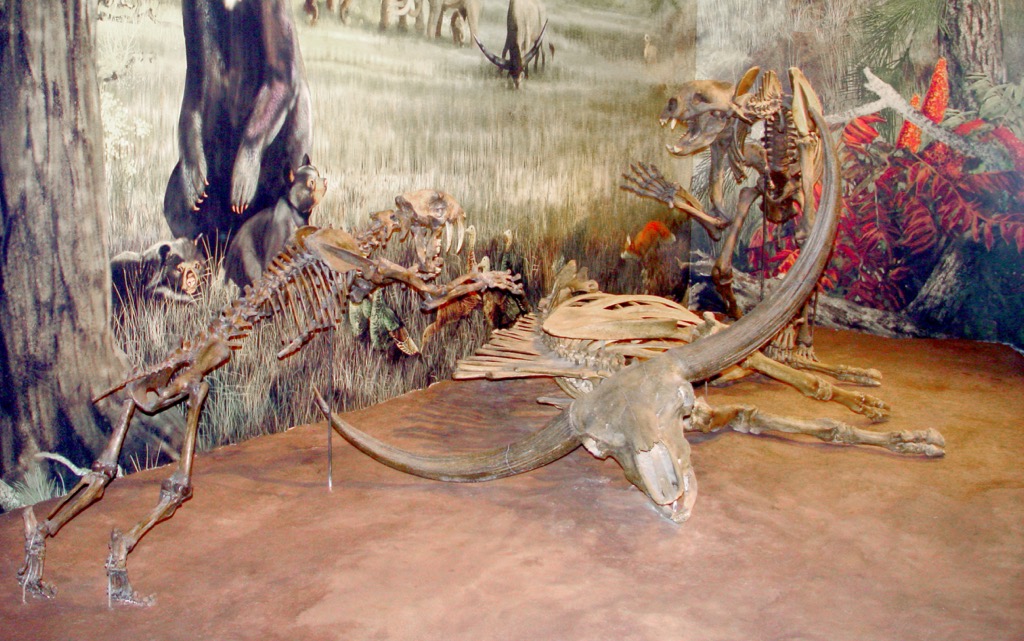 As I've mentioned in previous posts, there were two different species of Bison present at Diamond Valley Lake, the larger, long-horned Bison latifrons and the (relatively) smaller, shorter-horned Bison antiquus. These species are closely related, and it's often difficult to distinguish between them when dealing with fragmentary remains. But sometimes there's no doubt.Above is the right horn core from Bison latifrons. It has only been partially prepared, and is still in its field jacket. It's shown in dorsal view, with medial to the left and lateral to the right.Like other bovids, bison horns have a bony core that grows from the frontal, one of the bones that makes up the roof of the skull. The lump of bone on the left is part of the frontal. As large as the core is, it's incomplete; at least several centimeters are broken off from the tip. In life, the bony core would have been covered by a keratin sheath, making the horn even larger. And, of course, there was another horn on the left side. All told, it makes for an impressive horn spread, as shown in this cast from the Sam Noble Oklahoma Museum:
As I've mentioned in previous posts, there were two different species of Bison present at Diamond Valley Lake, the larger, long-horned Bison latifrons and the (relatively) smaller, shorter-horned Bison antiquus. These species are closely related, and it's often difficult to distinguish between them when dealing with fragmentary remains. But sometimes there's no doubt.Above is the right horn core from Bison latifrons. It has only been partially prepared, and is still in its field jacket. It's shown in dorsal view, with medial to the left and lateral to the right.Like other bovids, bison horns have a bony core that grows from the frontal, one of the bones that makes up the roof of the skull. The lump of bone on the left is part of the frontal. As large as the core is, it's incomplete; at least several centimeters are broken off from the tip. In life, the bony core would have been covered by a keratin sheath, making the horn even larger. And, of course, there was another horn on the left side. All told, it makes for an impressive horn spread, as shown in this cast from the Sam Noble Oklahoma Museum:
